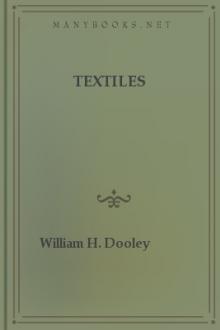Textiles
Textiles
For Commercial, Industrial, and Domestic Arts Schools; Also Adapted to Those Engaged in Wholesale and Retail Dry Goods, Wool, Cotton, and Dressmaker's Trades
The author established and since its inception has been in charge of the first industrial school for boys and girls in Massachusetts. At an early date he recognized the need of special text-books to meet the demand of young people who are attending vocational schools. There are plenty of books written on textiles for technical school students and advanced workers. But the author has failed to find a book explaining the manufacture and testing of textiles for commercial, industrial, domestic arts, and continuation schools, and for those who have just entered the textile or allied trades.
Book Excerpt
and and Scotland. Carpet wools approach more nearly to hair than other wools. The only staple of this class produced in the United States is grown on the original Mexican sheep of the great Southwest. Few of these Mexican sheep are left, for they have been improved by cross breeding, but they constitute the foundation stock of most of our Western flocks, which now produce superior clothing and combing wool.
=Sheep Shearing.= In order to get an idea of the importance of the sheep industry in the United States, one must take a glance at its condition in the big states of the West. Wyoming has more than 4,600,000 sheep within its borders. Montana, which held the record until 1909, has 4,500,000 sheep. Then comes Idaho with 2,500,000, Oregon with 2,000,000, and so on down the list until the nation's total reaches 40,000,000 sheep, four-fifths of which are west of the Missouri river.
[Illustration: SHEEP SHEARING]
To harvest the wool from such an enormous number of backs is a task that calls f
Editor's choice
(view all)Popular books in Instructional, Nature, Non-fiction
Readers reviews
0.0
LoginSign up
Be the first to review this book
Popular questions
(view all)Books added this week
(view all)
No books found

 Free Download
Free Download





















